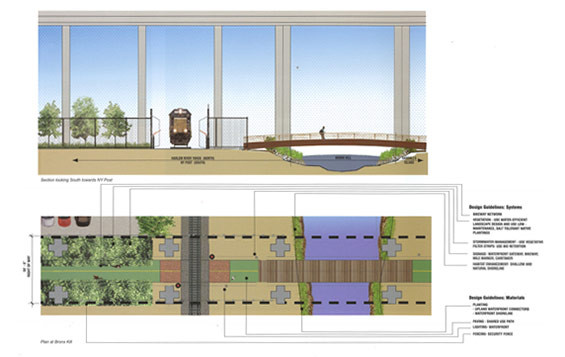Mathews Nielsen Landscape Architects announces the completion of the Randall Island Connector. The last of five funded projects in the firm’s twenty-project South Bronx Greenway master plan, this quarter-mile, dual-use path links 132nd Street with Manhattan’s Randall’s Island, providing pedestrians and cyclists with the first direct access to its 330-acre park, which opened in 1936. Today, the island’s amenities include more than 60 sports fields, a golf center, batting cages, boardwalks, picnic locales, and natural resources areas.
![]()
“During the community planning process for the South Bronx Greenway, the Randall’s Island Connector emerged as one of the first priority projects specifically because it offers easy access to diverse recreational opportunities not available elsewhere in the neighborhoods of the South Bronx,” says Principal Signe Nielsen, RLA, FASLA, Mathews Nielsen Landscape Architects.
![]()
Previously, access from the Bronx to Randall’s Island was arduous and indirect, requiring the traversing ramps and stairwells along the RFK Triborough Bridge. The new multimodal path runs under the existing Amtrak trestle, which is still active. The grand scale of the railroad trestle and its arches frame a powerful experience for pedestrians and cyclists.
![]()
The path is also remarkable for creating the only ADA-compliant access between Randall’s Island and the South Bronx. This access is achieved through a grade crossing over rail lines which incorporates an automated gate mechanism that closes the pedestrian access to accommodate the freight train and the addition of decking of a dual-purpose bridge. The bridge was constructed in 2009 as part of Con Edison’s electric expansion project from the Bronx to Randall’s Island, and was designed in partnership between Con Edison and New York City.
![]()
![]()
While providing important active lifestyle and health benefits, the Randall’s Island Connector also uses green infrastructure and a sustainable stormwater management plan to avoid site impacts to the Bronx Kill and tidal ecosystem. Environmental benefits include reduced total volume of stormwater runoff, increased infiltration and groundwater recharge, and improved water quality. Additional sustainable elements include the use of native and drought-tolerant plants.
![]()
Text and Images | Mathews Nielsen

